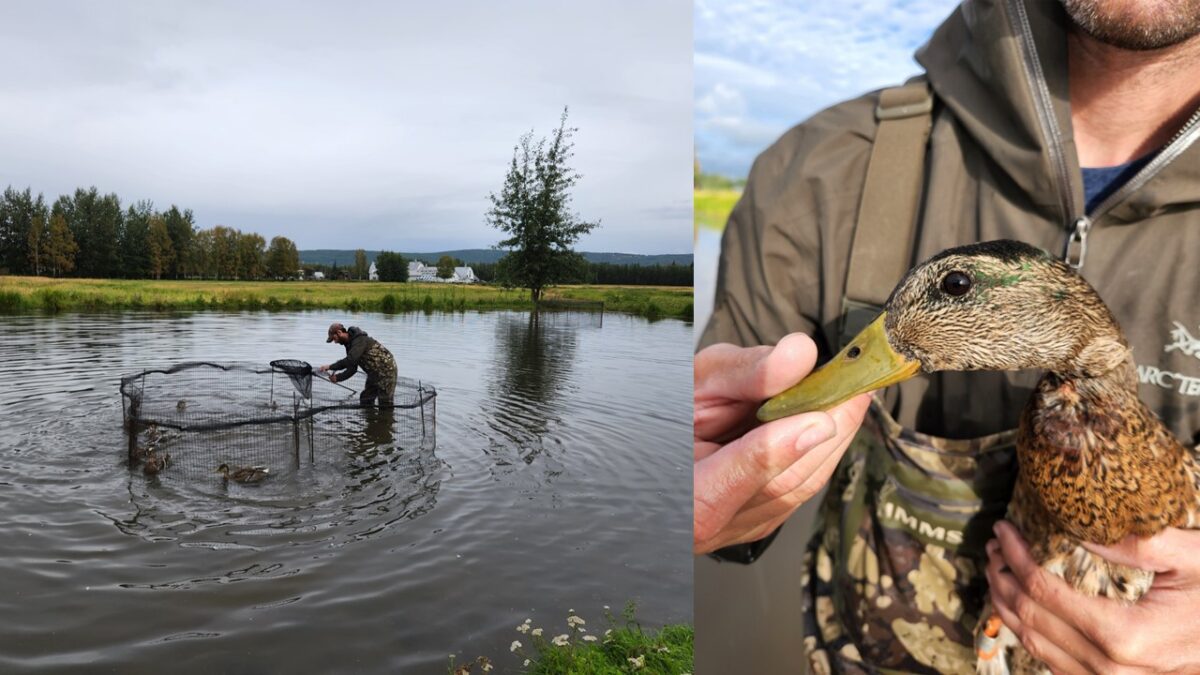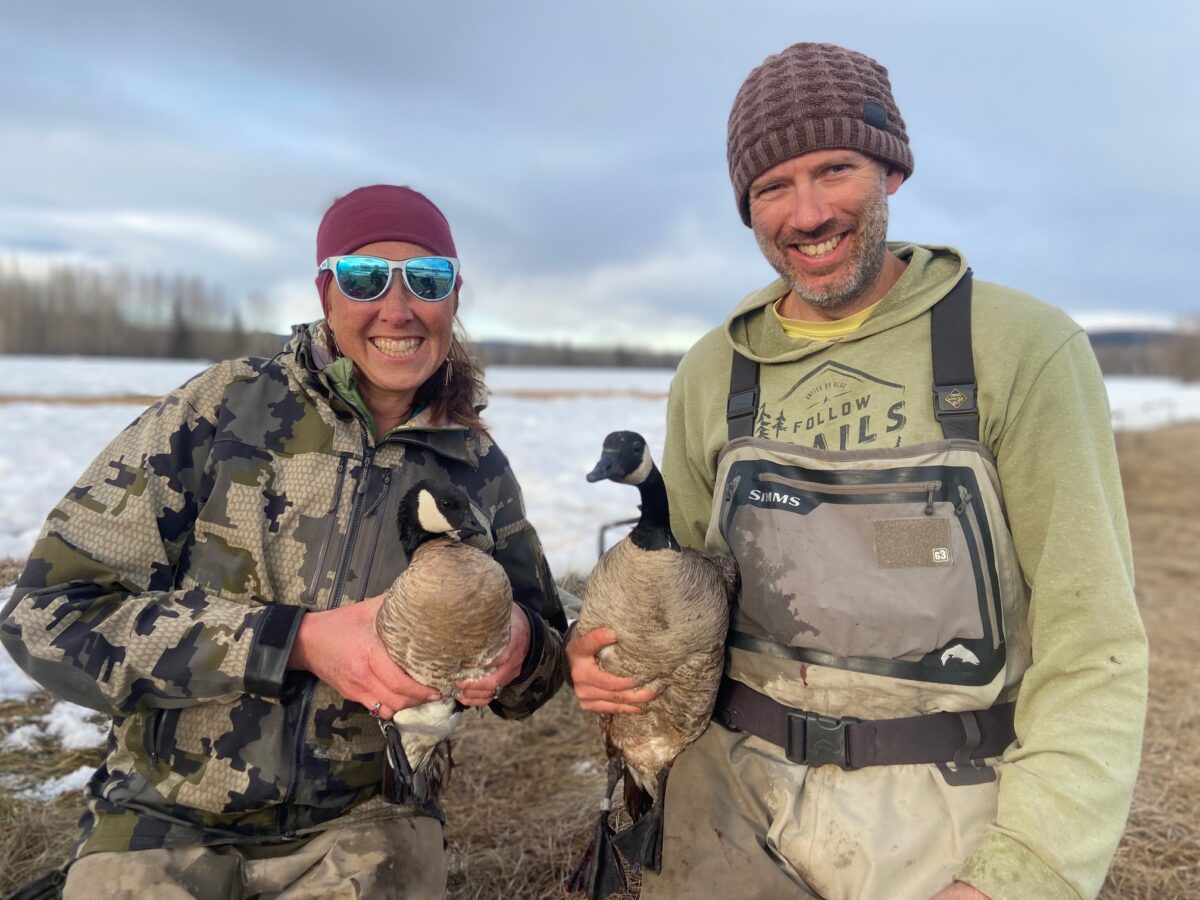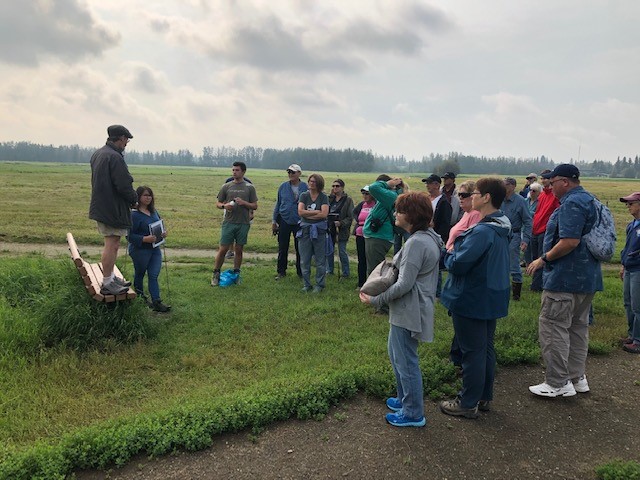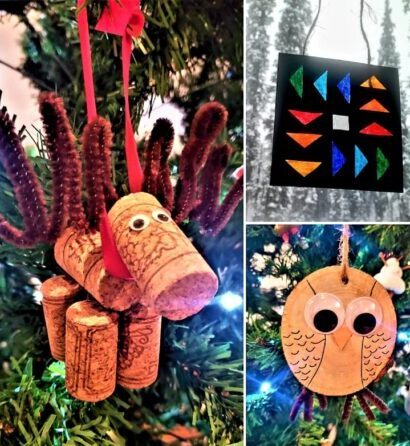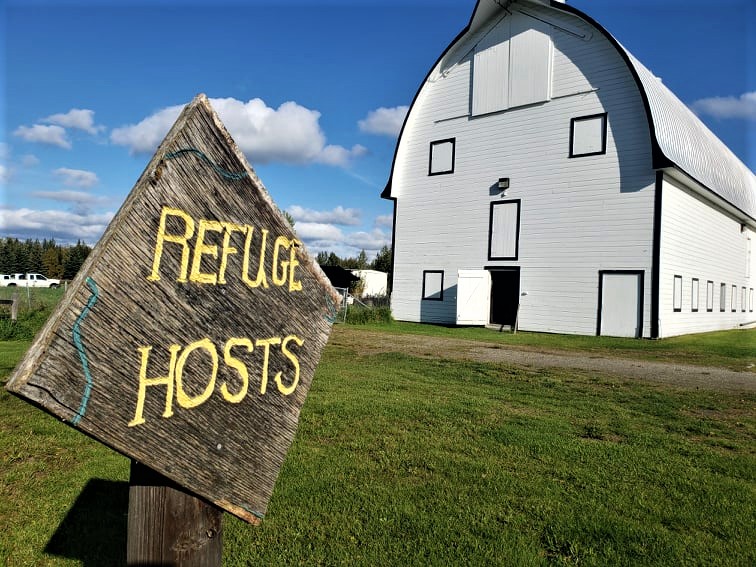Waterfowl banding occurs all throughout North America and is a useful tool in the monitoring of waterfowl species. As fall migration was getting underway, the Alaska Department of Fish and Game (ADF&G) conducted waterfowl banding throughout Alaska with a statewide goal of banding 6,000 Mallard ducks. Typically, the Interior banding effort is performed at a banding station on Big Minto Lake. However, due to high water levels, wildfires in the Interior, and equipment availability, the 2022 fall banding operation occurred at Creamer’s Field Migratory Waterfowl Refuge. The operation at the refuge was headed by ADF&G Wildlife Technician, Nate LaShomb, along with other banders and volunteers from ADF&G, the U.S. Fish & Wildlife Service, and the University of Alaska Fairbanks. The ducks were captured using a swim-in trap technique (right photo). This involves a baited trap that acts much like a crab pot in which the birds were allowed to enter the trap via an opening but are unable to leave …
Waterfowl Research at the Refuge: Spring Migration
By Michael Guttery and Tasha DiMarzio, Alaska Department of Fish and Game Waterfowl Program Over the last few months, the Alaska Department of Fish and Game (ADF&G) Statewide Waterfowl Program staff have been developing a research project focusing on white-cheeked geese. According to the National Audubon Society, the white-cheeked geese of North America were long considered a variable species of Canada Geese. It was not until 2004 that four of the smallest forms (Richardson’s, Aleutian, Taverner’s, and Minima) were recognized as their own distinct species known as Cackling Geese. The seven species of Canada Geese are the Atlantic, Interior, Giant, Moffitt’s, Dusky, Vancouver, and Lesser. In this research project, ADF&G is focusing on Lesser Canada Geese (Branta canadensis parvipes) and Taverner’s Cackling Geese (B. hutchinsii taverneri). These two species of geese are common in Alaska, though relatively little is known about them. In the late 1990’s, a University of Alaska Fairbanks graduate student, Dr. Michael Eichholz, conducted research aimed at mapping …
DIY Creamer’s Field Ornament Crafts for the Holidays!
In this season of gratitude, we thank you all for supporting us through this interesting year! While we are unable to gather in person for ornament crafting with our amazing volunteers, we wanted to share some awesome ornament crafts inspired by the art and wildlife at Creamer’s Field. We have compiled three easy ornament crafts that the whole family can create together with the right materials, supervision, and creativity! The first craft is the Cork Moose Ornament! While walking along one of the nature trails, visitors may spot moose meandering through the boreal forest on the refuge. Known as moose across North America, Alces alces is the largest member of the deer family. Adult moose can range in size from 800 pounds (small adult female) to1,600 pounds (large adult male), and they can be up to almost 6 feet tall. Moose can range in color from golden brown to almost black, depending on the season and the age of the …
Refuge Hosts at Creamer’s Field
Throughout the year, Creamer’s Field Migratory Waterfowl Refuge hosts many resident and migratory birds, mammals, insects, students, scientists, and visitors. On a visit to the refuge, you might have passed the “Refuge Host” sign by the large dairy barn and probably asked: why would this refuge need a host? The farmhouse was renovated in the 1990s to serve as a visitor’s center for the refuge. To ensure that the Farmhouse Visitor’s Center was fully staffed to accommodate visitors, the Refuge Hosting program was set up in 1998. Refuge Hosts serve as volunteers for the Division of Wildlife Conservation of the Alaska Department of Fish and Game. The summer season lasts from May 15 – September 15 and that period is split into three duty periods. Throughout their duty period, volunteering Refuge Hosts stay on site at the RV hook-up area. They provide essential services at and around the 12-acre historic buildings area. Refuge hosts staff the visitor’s center on the …
- Page 2 of 2
- 1
- 2

